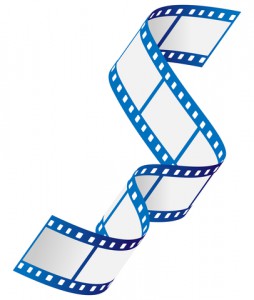This blog is part of a series of development frameworks for narrative screenworks from mobile and short films to long running TV series. The aim of the series is to look at the very first stage of development, when an idea has not been developed into a narrative or full blown concept yet. This is the stage where many options are possible and by using these frame works many simple mistakes can be avoided very early on in the development of work.
The Short Film Framework
This framework applies to all fiction works above a couple of minutes – for shorter versions see the mobile framework in previous blog – and up to the normally accepted limit for short films I.e.. 30 minutes. Some festival do accept longer works but the norm is around 30 minutes.
Firstly, discover the characters and their stories? Who are they, what problem do they have to solve, and why are they in dramatic conflict?
Having identified the various stories, what theme, if any, is there present in this initial collection of stories? Do they compliment each other or do you have too many stories focussing on too many different themes for them to work in a simple short narrative?
Then comes the crunch question – are the character’ stories realisable in the length of short being envisaged?
This is the most difficult question to answer, but also the critical one as to whether or not the idea really will work as a short film. Unfortunately, there is not enough space in this blog to adequately provide a definitive framework to answer this question. However, the three fundamental length distinctions in shorts, which have an impact on narrative content, are: –
The short short – under five minutes in length.
In essence, a joke structure, a narrative that focuses on delivering a big payoff. Characters and characterisation, as in the mobile framework, are dependent on strong types, often stereotypes, owing to the extremely short amount of narrative time available. However once over the two-minute mark the need to provide two stories/plotlines is a major difference from the mobile framework.
The commercial short – approximately five to twelve minutes in length.
This length has attracted most public funding, and has had the widest distribution in cinemas and festivals etc.; it needs two stories/plotlines, or a series of episodic moments, and requires dramatic development, to sustain interest.
Characters need to be seen to make a journey, the complexity of which is dependent on the tone. Comic characters tend not to develop during the narrative, while dramatic characters have to. Characterisation is very simple owing to the limited screen time, but it can be idiosyncratic. This is because there is time to establish and develop them, but not enough time to question their credibility.
The Academy short – from twelve to thirty minutes in length.
At this length the two main stories need substantial dramatic development, and the existence of a third story or plotline is common. However, the total number of stories is not no more than five, and then one or more of these will be extremely simple.
Characterisation and character development need to be more complex to sustain interest. If the plot is simple, then comedic and style elements will have to compensate in terms of engagement for the audience.
The final questions worth asking at this stage are – what genre of narrative is it? and what is originality and familiar about the film?
Answering this latter question is again clearly a question of knowing what else has been created. Fortunately the explosion in short film making over the last ten years has led to numerous short film festivals – a list of these can be found at
http://film.britishcouncil.org/festivals-directory/about-the-directory or you can view numerous short films online at http://www.thefilmnetwork.co.uk/films
The Feature Film Framework
This initial framework illustrates the first part of the knowledge that can be brought to a feature film idea and allows the writer, and the development team, to have some confidence they are on the right track in the early stages of development.
Starting from the initial premise feature film development rapidly moves to focus on the characters’ stories. Crucially, the protagonist and antagonists stories have to be identified, and the sources of conflict/dramatic development between them made clear. This can be easily achieved by asking – Who are they, what problem/s do they have to solve, and why are they in dramatic conflict? The basis of the premise.
A common mistake is to think that films are essentially one story, when inevitably they are at least two. Therefore, finding the second story is an essential aspect of assessing an idea. In developing the screenplay there will be at least three significant stories, and up to twelve or fifteen secondary stories, depending on the length, and dramatic form being used. If at this early stage there is no clear strong second story/plotline, then it will prove difficult not only to create a strong second act, but also to work out the real theme of the piece and its genre.
If the initial two main stories and thus the potential plotlines have been identified it will be possible to identify which of the major themes, which underpin feature film narratives are present. Often there will be more than one, which leads to a discussion about what is the real focus of the writer in developing the project, and which theme is more important. Sometimes this is best seen in the light of the genre that the writer or the development team are seeking to work within.
There are only four genre groups within feature film development – personal dramas; thrillers; horror and romances – each one uses one of two of the eight major themes to underpin all of their narratives. Therefore, when developing a project, even at this early stage, it is often possible to choose which genre to concentrate on depending on which theme is being addressed in the various main story/plotlines. Unfortunately, this blog does not allow space so plesea refer to other blogs in this series in ‘Art of Development’
The next major issue that presents itself is – What form of narrative is it? Does the plot suggest the traditional linear form, as in ‘ Eastern Promises’ (w. S Knight) or does the time frame of the narrative, with several large time jumps, suggest a more episodic structure as in ‘Control’ (w. M Greenhalgh) If the narrative contains several main characters is there a need to impose a time frame, or a specific incident on the various stories to ensure a coherent narrative e.g. Crash’ (w. P Haggis)?
However, the really critical question is – what is the film seeking to deliver in the climax? Without a clear ending many good ideas, which are often only the beginning of the narrative, fail, as the ending which fulfils the needs of the characters and the narrative as a whole, is never really found.
At this early stage this may be no more than the central character/s ultimately addresses their central problem in a particular location etc but if it is not clear how they will arrive at this point, or the writer/development team have no idea what this central problem is – then developing the feature film further will be difficult.
Inevitably, the question then arises – What is original and what is familiar about the idea? The genre, themes, and to some extent the characters’ stories provide the answer to the latter part of this question. The original elements arise from a unique setting, surprises in the plot, and character development, characterisation and the overall approach to the tone, and visual look of the film.
Finally, what are its commercial limitations/potential? Recognising the potential of an idea, and who the audience might be can save a great number of projects in development. Too many projects are started with no idea of whom they will be for, and crucially how an audience will be drawn to the project. If there are particular problems with the project, and it will need A-list cast to attract an audience, then the development of the project needs to take this into consideration, equally if it is aiming to be a small budget film then the development needs to reflect this.
These basic questions, and some answers can be addressed at this early stage, and thus avoid much of what can turn into development hell.




Fatal Frame Forum
What is the fatal Frame Forum?